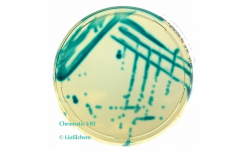AMSBIO has announced a new range of pre-made Nano-Lantern lentivirus products that utilize a proprietary lentiviral vector system to enable highly sensitive and precise in vivo luminescence imaging.
This cutting-edge Nano-Lantern lentivirus technology, which consists of an enhanced Renilla-Luciferase connected to an Orange Fluorescent protein (OFP), represents a significant improvement over previous methods and is poised to revolutionize many in vivo imaging applications.
Fluorescent markers and bioluminescence are widely used techniques for in vivo imaging in living cells. While fluorescence imaging is an extremely useful tool, it requires external excitation from laser light. Common drawbacks of using laser light excitation include autofluorescence, phototoxicity, and photobleaching.
By comparison, bioluminescence imaging does not require light activation but gives low brightness emissions and typically requires prolonged exposure times, making it difficult to observe small, rapidly moving structures.
The new lentivirus products, introduced by AMSBIO, are based upon a novel bioluminescence imaging method called Nano-Lantern which uses a bioluminescence resonance energy transfer (BRET) approach to significantly enhance signal intensity.
Beneficially, Nano-Lantern bioluminescence imaging also has an extremely low-level background signal, making it more sensitive and quantitative. When linked to a targeting protein, Nano-Lantern lentivirus products emit light in response to specific biological activity enabling dynamic real-time visualization in living organisms.
Combining dynamic visualization with enhanced signal intensity and low background noise - Nano-Lantern lentivirus has been demonstrated to provide bright and high-resolution imaging of small, rapidly moving sub-cellular structures.
For further information please visit AMSBIO or use the Request Information button to discuss this solution in more detail with the supplier.



















